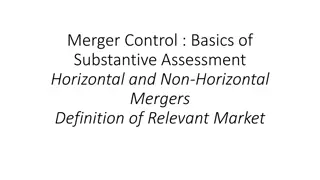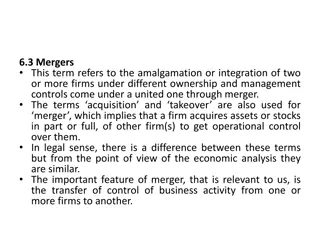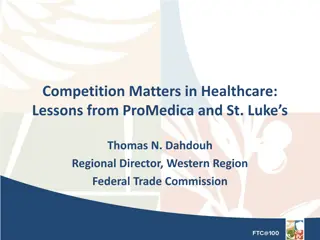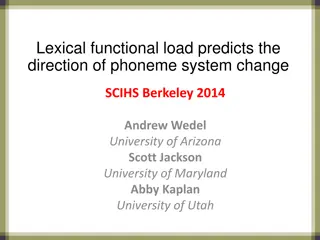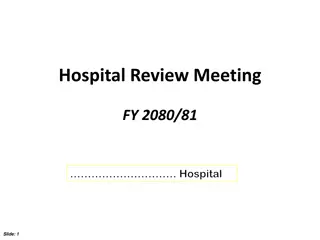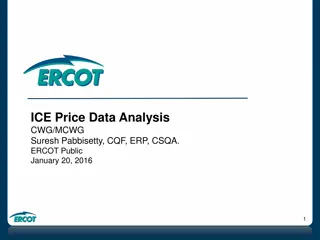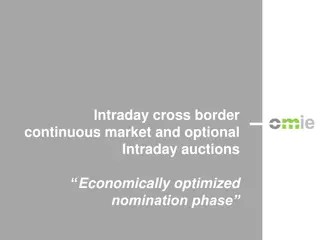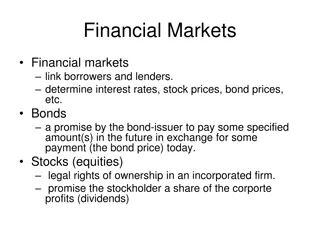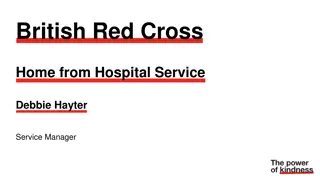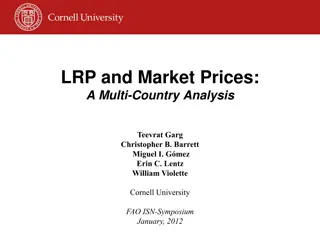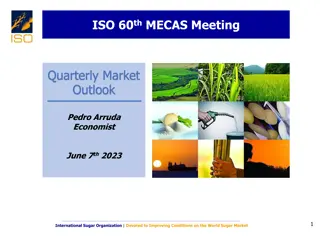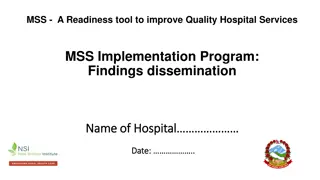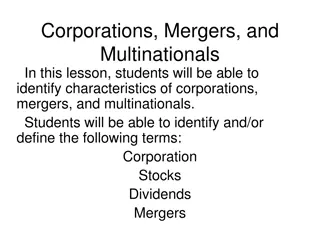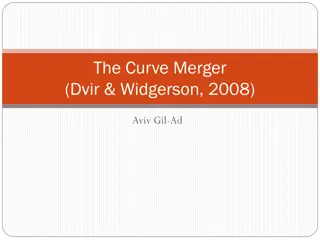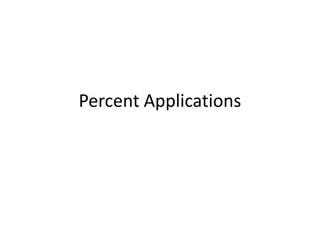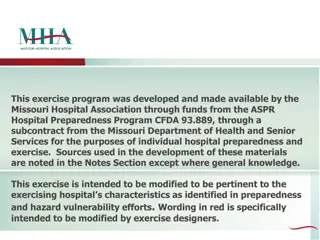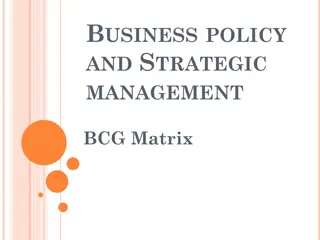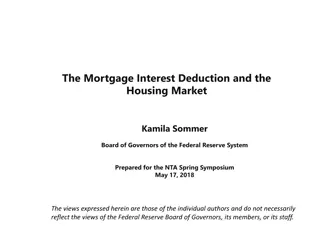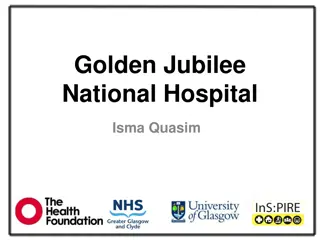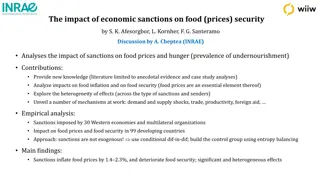Understanding the Impact of Cross-Market Hospital Mergers on Prices
Explore the effects of cross-market hospital mergers on pricing strategies and competition. Recent evidence suggests that such mergers can lead to higher hospital prices, impacting healthcare costs for consumers. Various factors contribute to this outcome, including service adjustments, quality improvements, and bargaining power changes. Antitrust laws play a crucial role in regulating these mergers to prevent monopolistic practices.
Download Presentation

Please find below an Image/Link to download the presentation.
The content on the website is provided AS IS for your information and personal use only. It may not be sold, licensed, or shared on other websites without obtaining consent from the author. Download presentation by click this link. If you encounter any issues during the download, it is possible that the publisher has removed the file from their server.
E N D
Presentation Transcript
Effects of Cross-Market Combinations: Theory and Evidence from Hospital Markets Leemore Dafny FTC Healthcare Workshop February 25, 2015
Motivation Standard horizontal merger theory is about combinations of rivals competing for the same end user of a given product or service, i.e. same market mergers Enforcement has therefore focused on these Many combinations span different geographic or product markets, i.e. cross-market mergers Cross-geographic market combinations Hospitals: Baylor and Scott & White; Community Health and Health Management Associates Cross-provider (and geographic) market combinations Post-acute care: Kindred (LTAC/rehab) and Gentiva (home health/hospice) Chronic disease: DaVita (dialysis) and Healthcare Partners (MDs)
Hospitals have been consolidating into larger systems Source: Dafny, Ho, Lee (2015); data from Irving Levin Associates and American Hosp Assoc
Many hospital mergers do not have any traditional horizontal overlap Notes: Counties outside a CBSA are treated as their own CBSA in the above. Dafny, Ho, Lee (2015)
Recent evidence suggests cross-market mergers tend to lead to higher hospital prices Anecdotal Community Tracking Study of 12 metro areas (Berenson et al 2012) Numerous participants in contract negotiations between health plans and hospitals noted that provider leverage depends on how big the hospital or hospital system is and how much of an insurer s patient volume it generates. Systematic Hospitals joining systems with a member in same broad metro area increase price 4-7 percent (Cuellar and Gertler 2005) Acquisition by a system leads to higher prices even when other members are outside broad metro area (Lewis & Pflum (2014, 2015)
How might cross-market mergers lead to price increases? Many possibilities: Imperfect adjustment for service and patient mix Improvements in quality Changes in bargaining skill or ability to bear risk Common customer and common insurer effects (focus today) Some are more compatible than others with standard antitrust law Section 7 of Clayton Act forbids acquisitions whose effect may be substantially to lessen competition, or to tend to create a monopoly
Providers in different markets may have common customers and/or common insurers Factor Effect on competition Effect on price Common customers If same customers value both providers, their combination can lessen competition for inclusion in insurance plans Common insurers If same insurers negotiate with both providers, their combination can change the bargaining problem they are solving ?
Deep dive: Common Customer Effect Focus to date: competition among hospitals for the same service Under standard model only a merger of hospitals that compete for the same patients affects joint bargaining position and therefore the negotiated price with insurers Reality: customers purchase option to use a bundle of provider services from insurers If same customer values both providers, the providers are substitutes vis a vis inclusion in the bundle E.g. employer with employees in both relevant geo markets E.g. families who value both adult and pediatric hospitals This common customer effect should be stronger for mergers in close proximity
Deep dive: Common Insurer Effect Town A Town B ?? ?? Insurer ----- Hospital A Insurer ------ Hospital B (?? ) (?? ) ???????? ???????? Suppose premium elasticity is higher in A. Combined industry profits would be larger if Hospitals A and B merge, and Hospital A lowers price and Hospital B raises price. Weighted average price effect is ambiguous Additional mechanism: political constraints in Town A yield ??< ??
What is net effect on price? An empirical study of cross-market hospital mergers Challenge: Mergers/acquisitions are not random Approach: Study hospitals that are bystanders to mergers. Compare merger effects for hospitals with strong vs. weak common customer/insurer effects Two groups of mergers FTC sample: investigated and consummated mergers Investigation market with horizontal overlap Throw out the horizontal overlap Study merger effect on affiliated hospitals Broad sample: culled from Irving Levin reports Drop crown jewels and any merging hospitals within 30 min drive time Source: Dafny, Ho, Lee (2015) working paper
Empirical Approach: Overview Consider two different types of treatment hospitals Merger of System A and System B C A A B B A B B A B D Adjacent treatments Non-adjacent treatments Notes: Each rectangle is a state; wavy lines signify within-state geo markets
Results: FTC Sample Post-merger price increase of 5 percent for adjacent hospitals No increase for non-adjacent hospitals All estimates are relative to control hospitals unaffected by mergers Notes: Graph of coefficients from regression model of same- hospital price growth, controlling for year, case mix, beds, % Medicaid, and for-profit status
Results: Broad Sample Post-merger price increase of 10 percent for adjacent hospitals No increase for non-adjacent hospitals All estimates are relative to control hospitals unaffected by mergers Notes: Graph of coefficients from regression model of same- hospital price growth, controlling for year, case mix, beds, % Medicaid, and for-profit status
Preliminary Conclusions and Implications Adding adjacent system member P 5 - 10% Adding non-adjacent system member no P change Common customer effect + common insurer effect are largest for adjacent additions Suggests hospitals in different, nearby, markets can constrain one another s pricing because contracting occurs at broader geographic units We are currently working to disentangle common customer and common insurer effects Enforcers may need to broaden criteria for deal investigations But there must also be a limiting principle


